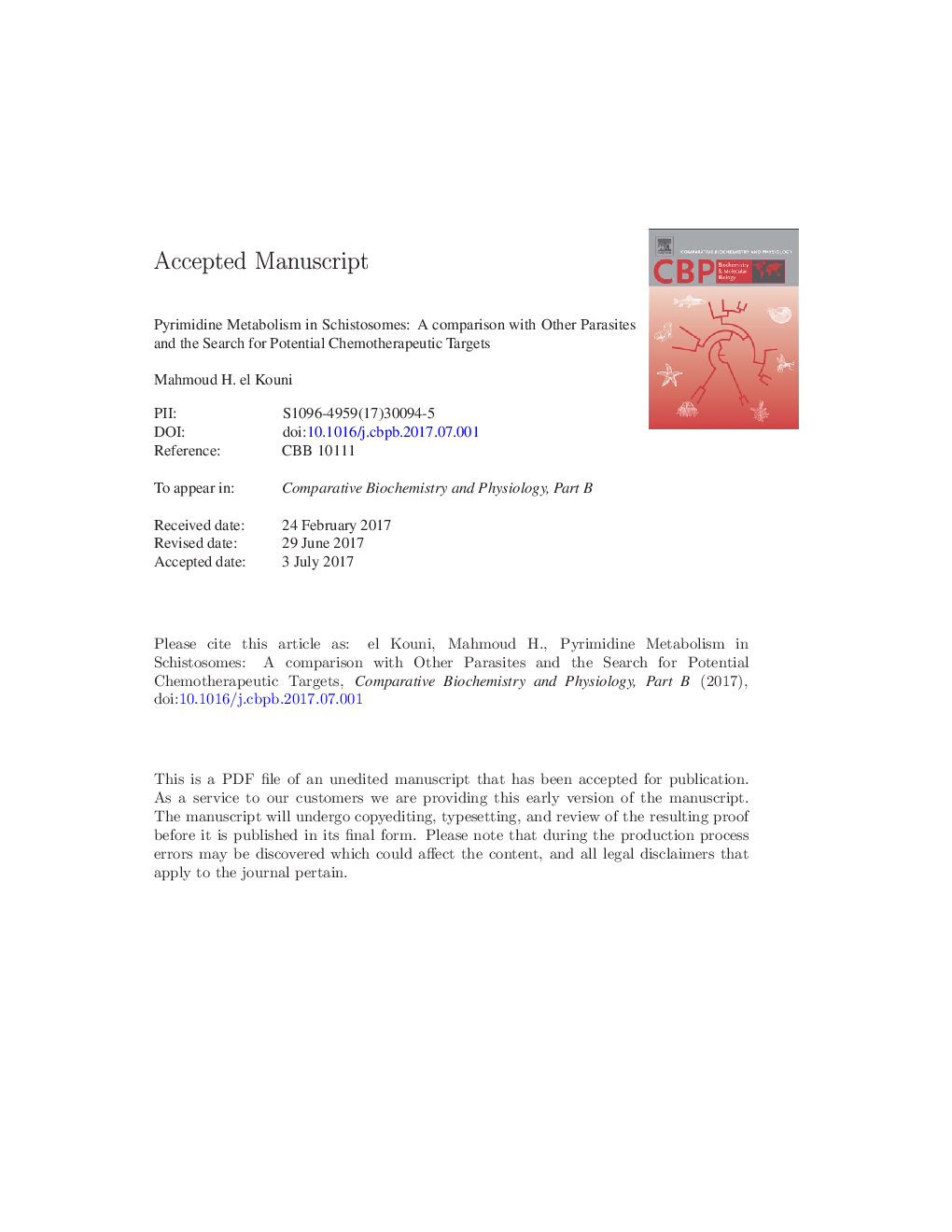| Article ID | Journal | Published Year | Pages | File Type |
|---|---|---|---|---|
| 5510424 | Comparative Biochemistry and Physiology Part B: Biochemistry and Molecular Biology | 2017 | 125 Pages |
Abstract
The rational design of a drug is usually based on biochemical and physiological differences between pathogens and host. Pyrimidine metabolism is an excellent target for such studies. Schistosomes, unlike most of the host tissues, require a very active pyrimidine metabolism for the synthesis of DNA and RNA. This is essential for the production of the enormous numbers of eggs deposited daily by the parasite to which the granulomas response precipitates the pathogenesis of schistosomiasis. Furthermore, there are sufficient differences between corresponding enzymes of pyrimidine metabolism from the host and the parasite that can be exploited to design specific inhibitors or “subversive substrates” for the parasitic enzymes. Specificities of pyrimidine transport also diverge significantly between parasites and their mammalian host. This review deals with studies on pyrimidine metabolism in schistosomes and highlights the unique characteristic of this metabolism that could constitute excellent potential targets for the design of safe and effective antischistosomal drugs. In addition, pyrimidine metabolism in schistosomes is compared with that in other parasites where studies on pyrimidine metabolism have been more elaborate, in the hope of providing leads on how to identify likely chemotherapeutic targets which have not been looked at in schistosomes.
Keywords
UTP2′-deoxycytidine 5′-triphosphateDTMPFdUMPorotidine 5′-monophosphateDTDPdCTPThymidine 5′-monophosphatedCMPNBMPR2′-deoxyuridine 5′-monophosphatedUTPaseDTTPCTPOMP2′-deoxyuridine 5′-triphosphateAMPdUDPADPCMPUMPCDPIC50dUTPuridine 5′-monophosphateuridine 5′-triphosphateadenosine 5′-triphosphateadenosine 5′-diphosphateadenosine 5′-monophosphateATPEnzymesParasitesthymidine 5′-triphosphateTransportdUMPcytidine 5′-triphosphatecytidine 5′-diphosphatecytidine 5′-monophosphateSchistosomesChemotherapyConcentration for 50% InhibitionnitrobenzylthioinosinePyrimidine
Related Topics
Life Sciences
Biochemistry, Genetics and Molecular Biology
Biochemistry
Authors
Mahmoud H. el Kouni,
